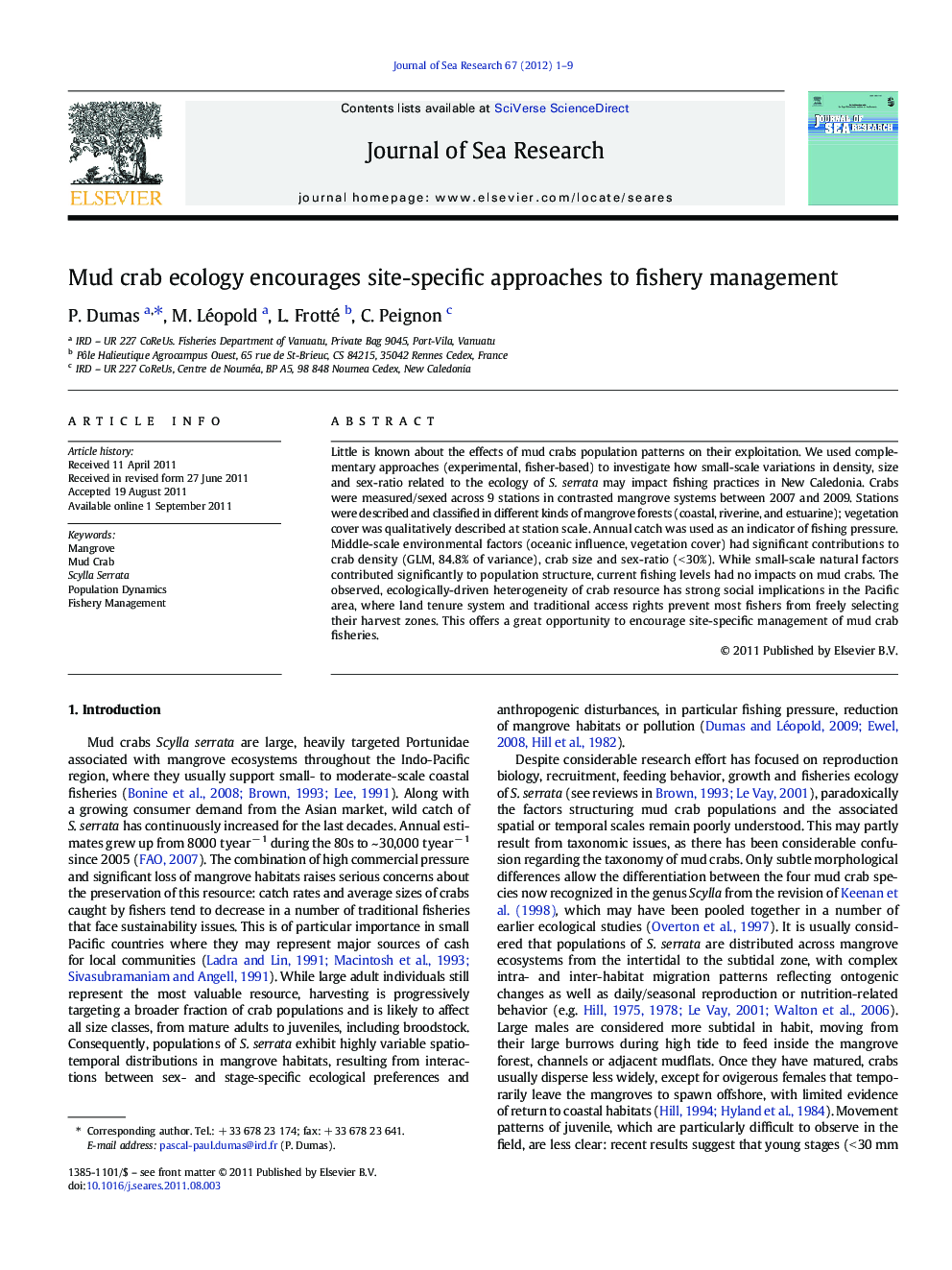| Article ID | Journal | Published Year | Pages | File Type |
|---|---|---|---|---|
| 4550097 | Journal of Sea Research | 2012 | 9 Pages |
Little is known about the effects of mud crabs population patterns on their exploitation. We used complementary approaches (experimental, fisher-based) to investigate how small-scale variations in density, size and sex-ratio related to the ecology of S. serrata may impact fishing practices in New Caledonia. Crabs were measured/sexed across 9 stations in contrasted mangrove systems between 2007 and 2009. Stations were described and classified in different kinds of mangrove forests (coastal, riverine, and estuarine); vegetation cover was qualitatively described at station scale. Annual catch was used as an indicator of fishing pressure. Middle-scale environmental factors (oceanic influence, vegetation cover) had significant contributions to crab density (GLM, 84.8% of variance), crab size and sex-ratio (< 30%). While small-scale natural factors contributed significantly to population structure, current fishing levels had no impacts on mud crabs. The observed, ecologically-driven heterogeneity of crab resource has strong social implications in the Pacific area, where land tenure system and traditional access rights prevent most fishers from freely selecting their harvest zones. This offers a great opportunity to encourage site-specific management of mud crab fisheries.
►Mud crab populations were studied Caledonian mangroves using experimental vs. fisher-based approaches. ►Middle and small-scale environmental factors had significant contributions to crab density, size and sex-ratio. ►Current fishing levels had no observable impacts on crab populations. ►The ecologically-driven heterogeneity of crab resource has strong social implications for traditional coastal fisheries in the Pacific. ►This offers a great opportunity to encourage site-specific management of mud crab fisheries.
